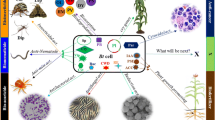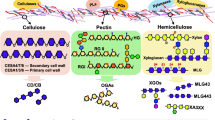Abstract
The silkworm Bombyx mori is exploited both as a powerful biological model system and also as a tool to convert leaf protein into silk. Silkworm larvae often suffer from viral infections causing heavy losses to the economy of the silk industry. Insects exhibit both humoral and cellular immune responses that are effective against various pathogens like bacteria, fungi, protozoa, etc., but no insect immune response is effective against viral infections. To date, no satisfactory reports are available on antiviral immunity of the silkworm. Some efforts have been made by very few workers to identify and characterize the antiviral proteins in the silkworm. In the present article the mode of viral infection, and the activity of certain antiviral proteins involved in silkworm immunity and also in some other insects are discussed. The investigation will be helpful in understanding the molecular aspects of antiviral immunity, disease control and may form the basis for potential use of silkworm in other fields such as medicine.
Similar content being viewed by others
References
Aizawa, K., 1962. Antiviral substance in the gut-juice of the silkworm. J. Insect Pathol., 4:72–76.
Asano, T., Ashida, M., 2001. Cuticular pro-phenoloxidase of the silkworm: purification and characterization of its transport from hemolymph. J. Biol. Chem., 276(14):11113–11115. [doi:10.1074/jbc.M008425200]
Ashida, M., Brey, P.T., 1997. Molecular Mechanisms of Immune Responses in Insects. Chapman & Hall, London, p.135–172.
Bulet, P., Hetru, C., Dimarq, J.L., Hoffmann, D., 1999. Antimicrobial peptides in insects; structure and function. Dev. Comp. Immunol., 23(4–5):329–344. [doi:10.1016/S0145-305X(99)00015-4]
Chernysh, S., Kim, S.I., Bekker, G., Pleskach, V.A., Filatova, N.A., Anikin, V.B., Platonov, V.G., Bulet, P., 2002. Antiviral and antitumour peptides from insects. PNAS, 99(20):12628–12632. [doi:10.1073/pnas.192301899]
Clem, R.J., Fechheimer, M., Miller, L.K., 1991. Prevention of apoptosis by baculovirus gene during infection of insect cells. Science, 254(5036):1388–1390.
Clemens, M.J., Elia, A., 1997. The double stranded RNA-dependent protein kinase PKR: structure and function. J. Inter. Cytokine. Res., 17(9):503–524.
de Gregorio, E., Han, S.J., Lee, W.J., Baek, M.J., Osaki, T., Kawabata, S., Lee, B.L., Iwanaga, S., Lemaitre, B., Brey, P.T., 2002. An immune-responsive serpin regulates the melanization cascade in Drosophila. Dev. Cell, 3(4):581–592. [doi:10.1016/S1534-5807(02)00267-8]
Engelhard, E.K., Volkman, L.E., 1995. Developmental resistance in forth instar Trichoplusia ni orally inoculated with Autographa californica M nuclear polyhedraosis virus. Virol., 209(2):384–389. [doi:10.1006/viro.1995.1270]
Engelhard, E.K., Kam-Morgan, L.N., Washburn, J.Q., Volkman, L.E., 1994. The insect tracheal system, a conduit for the systemic spread of Autographa californica M nuclear polyhedraosis virus. PNAS, 91(8):3224–3227. [doi:10.1073/pnas.91.8.3224]
Funakoshi, M., Aizawa, K., 1989. Antiviral substance in the silkworm gut juice against a nuclear polyhedrosis virus of the silkworm. J. Invertebr. Pathol., 54(2):151–155. [doi:10.1016/0022-2011(89)90024-4]
Gorman, M.J., Paskewitz, S.M., 2001. Serine proteases as mediators of mosquito immune responses. Insect. Biol. Mol. Biol., 31(3):257–262. [doi:10.1016/S0965-1748(00)00145-4]
Granados, R.R., Lawler, K.A., 1981. In-vivo pathway of AcNPV invasion and infection. Virol., 108(2):297–308. [doi:10.1016/0042-6822(81)90438-4]
Hayashiya, K., Nishida, J., 1968. Inactivation of nuclear polyhedrosis virus in the digestive of larvae reared on natural and artificial diets. J. Appl. Entomol. Zool., 12:189–193 (in Japanese).
Hayashiya, K., Matsubara, F., 1971. Comparative experiments with the silkworm larvae reared on mulberry leaves and artificial diets: comparison of antiviral activities in the digestive juice of larvae reared on natural and artificial diets. Bull Fac. Text. Sci., 6:87–100.
Hayashiya, K., Nishida, J., 1976. The mechanism of formation of the red fluorescent protein in the digestive juice of silkworm larvae—the formation of chlorophyllidae-a. J. Appl. Entomol. Zool., 20:37–43 (in Japanese).
Hirai, M., Terenius, O., Faye, I., 2004. Baculovirus and dsRNA induce Hemolin, but no antibacterial activity in Antheraea pernyi. Insect Molecular Biology, 13(4):399–405. [doi:10.1111/j.0962-1075.2004.00497.x]
Hiraki, A., Hirayama, E., Kim, J., 2000. Antiviral substance from silkworm faeces: characterization of its antiviral activity. Microbiol. Immunol., 44(8):669–676.
Hoffmann, J.A., 2003. The immune response in Drosophila. Nature, 426(6962):33–38. [doi:10.1038/nature02021]
Hoffmann, J.A., Kafatos, F.C., Janeway, C.A., Ezekowitz, R.A., 1999. Phylogenetic perspectives in innate immunity. Science, 284(5418):1313–1318. [doi:10.1126/science.284.5418.1313]
Hortan, H.M., Burand, J.P., 1993. Saturable attachment sites for polyhedron derived baculovirus on insect cells and evidence for entry through direct membrane fusion. J. Virol., 67:1860–1868.
Janeway, C.A., 1989. Approaching the asymptote? Evolution and revolution in immunology. Quant. Biology, 54(1):1–13.
Jayaprakash, R.M., Rachappa, K.D., 2000. Virus activating protein RFP. Indian Silk, 4:11–12.
Kanost, M.R., Zhao, L., 1996. Insect hemolymph proteins from the immunoglobulin superfamily. Adv. Comp. Environ. Physiol., 23:185–197.
Lavine, M.D., Strand, M.R., 2002. Insect hemocytes and their role in immunity. Insec. Biochem. Mol. Biol., 32(10):1295–1309. [doi:10.1016/S0965-1748(02)00092-9]
Lee, K.Y., Horodyski, F.M., Valaitis, A.P., Denlinger, D.L., 2002. Molecular characterization of the insect immune protein hemolin and its high induction during embryonic diapause in the gypsy moth. Lymantria Dispar. Insect Bio. Mol. Biol., 32(11):1457–1467. [doi:10.1016/S0965-1748(02)00066-8]
Lehane, M.J., 1997. Peritrophic matrix structure and function. Annu. Rev. Entomol., 42(1):525–550. [doi:10.1146/annurev.ento.42.1.525]
Lehane, M.J., Wu, D., Lehane, S.M., 1997. Midgut-specific immune molecules are produced by the blood-sucking insect Stomoxys calcitrans. PNAS, 94(21):11502–11507. [doi:10.1073/pnas.94.21.11502]
Lehane, M.J., Aksoy, S., Levashina, E., 2004. Immune responses and parasite transmission in blood-feeding insects. Trends in Parasitology, 20(9):433–439. [doi:10.1016/j.pt.2004.07.002]
Levashina, E.A., Moita, L.F., Blandin, S., Vriend, G., Lagueux, M., Kafatos, F.C., 2001. Conserved role of a complement-like protein in phagocytosis revealed by dsRNA knockout in cultured cells of the mosquito, Anopheles gambiae. Cell, 104(5):709–718. [doi:10.1016/S0092-8674(01)00267-7]
Ligoxygakis, P., Pelte, N., Ji, C., Leclerc, V., Duvic, B., Belvin, M., Jiang, H., Hoffmann, J.A., Reichhart, J.M., 2002. A serpin mutant links toll activation to melanization in the host defence of Drosophila. EMBO J., 21(23):6330–6337. [doi:10.1093/emboj/cdf661]
Lim, D.S., Ko, S.H., Kim, S.J., Park, Y.J., Park, J.H., Lee, W.Y., 2002. Photoinactivation of vesicular stomatitis virus by a photodynamic agent, chlorophyll derivatives from silkworm excreta. J. Photochem. Photobiol. B., 67(3):149–156. [doi:10.1016/S1011-1344(02)00318-4]
Maeda, S., 1989. Expression of foreign genes in insects using baculovirus vectors. Annu. Rev. Entomol., 34(1):351–372. [doi:10.1146/annurev.en.34.010189.002031]
Martignoni, M.E., Iwai, P.J., 1986. A Catalogue of Viral Diseases of Insects, Mites and Ticks. In: General Technical Report PNW-195, 4th Ed. United States Northwest Research Station, Portland.
Meister, M., Lagueux, M., 2003. Drosophila blood cells. Cell. Microbiol., 5(9):573–580. [doi:10.1046/j.1462-5822.2003.00302.x]
Monsma, S.A., Oomens, A.G., Blissard, G.W., 1996. The GP64 envelope fusion protein is as essential baculovirus protein required for cell-to-cell transmission of infection. J. Virol., 70(7):4607–4616.
Nakazawa, H., Tsuneishi, E., Ponnuvel, K.M., Furukawa, S., Asaoka, A., Tanaka, H., Ishibashi, J., Yamakawa, M., 2004. Antiviral activity of a serine protease from the digestive juice of B. mori larvae against NPV. Virol., 321(1):154–162. [doi:10.1016/j.virol.2003.12.011]
Narayan, K., 2004. Insect resistance: its impact on microbial control of insect pests. Current Science, 86(6):800–814.
Ourth, D.D., 2004. Antiviral activity against human immunodeficiency virus-1 in vitro by myristoylated-peptide from Heliothis virescens. Biochem. Biophys. Res. Commu., 320(1):190–196. [doi:10.1016/j.bbrc.2004.05.137]
Ponnuvel, K.M., Nakazawa, H., Furukawa, S., Asaoka, A., Ishibashi, J., Tanaka, H., Yamakawa, M., 2003. A Lipase isolated from the silkworm shows antiviral activity against NPV. J. Virol., 77(19):10725–10729. [doi:10.1128/JVI.77.19.10725-10729.2003]
Popham, H.J.R., Shelby, K.S., Brandt, S.L., Coudron, T.A., 2004. Potent virucidal activity in larval Heliothis virescens plasma against Helicoverpa zea single capsid nucleopolyhedrovirus. J. Gen. Virol., 85:2255–2261. [doi:10.1099/vir.0.79965-0]
Prudhomme, J.C., Couble, P., 2002. Perspectives in silkworm transgenesis. Current Science, 83(4):432–438.
Roxstrom-Lindquist, K., Lindstrom-Dinnetz, I., Olesen, J., Engstrom, Y., Faye, I., 2002. An intron enhancer activates the immunoglobulin-related Hemolin gene in Hyalophora cecropia. Insec. Mol. Biol., 11(5):505–515. [doi:10.1046/j.1365-2583.2002.00359.x]
Tamura, T., Thibert, C., Royer, C., Kanda, T., Abraham, E., Kamba, M., Komoto, N., Thomas, J.L., Mauchamp, B., Chavancy, G., et al., 2000. Germline transformation of the silkworm using a piggyback transposon-derived vector. Nat. Biotechnol., 18(1):81–84. [doi:10.1038/71978]
Terenius, O., 2004. Anti-Parasitic and Anti-Viral Immune Responses in Insects. Ph.D. Thesis, Department of Genetics, Microbiology and Toxicology, Stockholm University, Stockholm, Sweden.
Tzou, P., Ohresser, S., Ferrandon, D., Capovilla, M., Reichhart, J.M., Lemaitre, B., Hoffmann, J.A., Imler, J.L., 2000. Tissue-specific inducible expression of antimicrobial peptide genes in Drosophila surface epithelia. Immunity, 13(5):737–748. [doi:10.1016/S1074-7613(00)00072-8]
Vernick, K.D., Fujioka, H., Seeley, D.C., Tandler, B., Aikawa, M., Miller, L.H., 1995. Plasmodium gallinaceum—A refractory mechanism of ookinete killing in the mosquito, Anopheles gambiae. Exp. Parasitol., 80(4):583–595. [doi:10.1006/expr.1995.1074]
Washburn, J.O., Kirkpatrick, B.A., Volkman, L.E., 1995. Comparative pathogenesis of AcMNPV in larvae of Trichoplusia ni and Heliothis virucens. Virol., 209(2):561–568. [doi:10.1006/viro.1995.1288]
Wyllie, A.H., Kerr, J.F.R., Currie, A.R., 1980. Cell death: the significance of apoptosis. Int. Rev. Cytol., 68:251–306.
Yu, X.Q., Kansot, M.R., 1999. Developmental expression of Manduca sexta hemolin. Arch. Insec. Biochem. Physiol., 42(3):198–212. [doi:10.1002/(SICI)1520-6327(199911)42:3〈198::AID-ARCH4〉3.0.CO;2-G]
Yu, X.Q., Zhu, Y.F., Ma, C., Fabrick, J.A., Kanost, M.R., 2002. Pattern recognition proteins in Manduca sexta plasma. Insec. Biochem. Mol. Biol., 32(10):1287–1293. [doi:10.1016/S0965-1748(02)00091-7]
Author information
Authors and Affiliations
Corresponding author
Additional information
Project supported by the National Basic Research Program (973) of China (No. 2005CB121003), and the Natural Science Foundation of Zhejiang Province (No. Y305050), China
The two authors contribute equally to this work
Rights and permissions
About this article
Cite this article
Yao, Hp., Wu, Xf. & Gokulamma, K. Antiviral activity in the mulberry silkworm, Bombyx mori L.. J. Zhejiang Univ. - Sci. A 7 (Suppl 2), 350–356 (2006). https://doi.org/10.1631/jzus.2006.AS0350
Received:
Accepted:
Published:
Issue Date:
DOI: https://doi.org/10.1631/jzus.2006.AS0350




